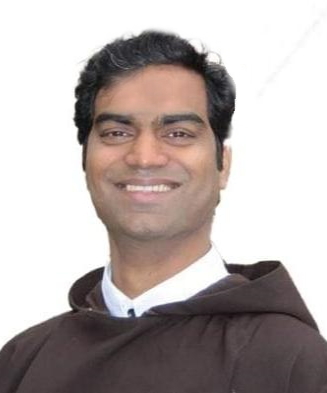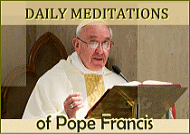Going up the mountain: Learning to pray
Gospel Reading – Mk 9: 2-10
The liturgy of the word of God for Sundays in Lent is very well thought-out and appropriately laid out. On the first Sunday of Lent, in all the three cycles, the central theme is temptations of Jesus. On the second Sunday of Lent, like today, the liturgy of the word invites us to focus on the transfiguration of the Lord. The meditation on the transfiguration during lent becomes for us a prediction of what lies at the end of Lent – the resurrection of the Lord. This is what perhaps it meant for the three apostles who were taken up the mountain only six days after (Mk 9:2) Jesus had told them about his impending suffering and death (Mk 8:31). This was important particularly for Peter, who could not simply accept the possibility that his hero – the Christ (Mk 8:29) – will have to suffer grievously (Mk 8:32). For him it is a big lesson that Christian life is a coincidence of opposites – death and life, suffering and triumph, struggling to climb a mountain and wanting to stay there, being exalted on the mountain-top and having to come down to the market place of daily life.
The gospel reading of today is full of symbols: after six days, the mountain, being alone, dazzling clothes, appearance of Moses and Elijah, wanting to pitch tents, the cloud, the voice from heaven, coming down the mountain, and the warning of Jesus not to tell others until the time comes. All these symbols are associated with ‘theophany’ – the appearance of God or the experience of God. Let us just decode one of them: the mountain.
Mountain as a location for the experience of God
Mountains are considered the abode of God in many religions and cultures, and hence to experience God one has to analogically go up the mountain. The Hindus believe that God resides on the mountain – the Kailash! Similar belief is found among the peoples of Africa. Kilimanjaro, translated in the local language, would simply mean ‘the mountain of God’. The Kikuyu people of Kenya claim their origin from Mount Kenya, which they call, “Kiri-nyaga” – which again means ‘the mount of God’.
Also in the Jewish tradition there is a strong association between mountain and the experience of God. Let us look at the two Old Testament figures mentioned in today’s gospel text – Moses and Elijah – and see how their own experience of God was in the context of the mountain.
Moses encounters God on a ‘high mountain’ (Exodus 24:12, 15-18; 34:3).Mount Sinai (or Horeb) is considered the mount of the covenant – the place from where Moses came down with the Ten Commandments. Incidentally, the transfiguration narrative borrows many symbols that are found in Moses’ own experience of God on top of the mountain. When Moses was on top of the mountain (Ex 24:15-18; 34:5) a cloud descends and overshadows the mountain. And God speaks from the cloud (Ex 24:16). The face of Moses becomes radiant when he speaks to God (Mk 9:2-3; Ex 34:29-30, 35). Those who witness this radiance are overcome by awe (Ex 34:30), and this happens after six days (Ex 24:16).
There is also the story of Elijah encountering God on the mountain (1Ki 19:11-13). After a journey of forty days and forty nights, Elijah is alone on the mountain, and there he encounters God in the sheer silence of the gentle breeze, and he wraps his face with a mantle.
It is not by chance then that going up the mountain has become an archetype of the Christian journey towards an experience of God. St John of the Cross would call this, Ascent of Mount Carmel; Thomas Merton in turn would call it: The Seven Storey Mountain. Teresa of Avila in her Interior Castle, uses the image of going up the castle that has different storeys.
Learning to Pray
What does this mean for us today? I see the image of going up the mountain as an act of the human will – an effort that expresses the human desire for God. But what will happen on top of the mountain is Grace. When I learn a method of prayer, and decide to use it in a particular moment of prayer, I am climbing the mountain. By that act, I express that I am open to the experience of God. But what will actually happen in that moment of prayer is the Grace of God. Therefore, in this Lenten series of reflections, about compass and roadmaps, today I would like to introduce another method of prayer.
Before offering some practical guidelines on this method, here are a few words about its background. ‘Jesus Prayer’ originated among the ‘desert fathers and mothers’ in Egypt and has been in use in the Christian tradition at least from the 4th century. Right from that time, body posture, breathing, use of prayer beads, and the repetition of the name of Jesus have been linked to this method of prayer. It is important to recognize that the use of techniques such as the body posture and breathing brings to fore the embodied-ness of our encounter with God, which is also consistent with the theology of sacraments and sacramental. However, breathing and prayer beads are not ends in themselves. What is important is to use them as the means to prepare ourselves to be open to God who acts on us in His own way and in His own time. If you are not comfortable with any of the steps suggested below, feel free to omit it. I insist: going up the mountain – even helped by the community – is the act of will, what will happen up there is Grace. In ‘Jesus Prayer’ we go up the mountain in the company of Jesus himself as the apostles did in the gospel narrative of today. So here is the method:
Jesus Prayer
Quieten yourself in an attitude of prayer. Take a very comfortable posture. Sit upright with your back straight, but be relaxed. (If you are seated on a chair, try to place your feet comfortably on the floor.) Have your prayer beads in hand. Close your eyes gently.
Become aware of your breathing. As you breathe out, relax the different parts of your body. Take time to relax. Relaxing is the first act of faith: if God is in control, why be anxious. Be attentive but relaxed. Do not manipulate the breathing, just be aware.
When you are ready, begin to pray: as you breathe in, say quietly: “Jesus, son of the living God.” And as you breathe out, say: “Have mercy on me.” As you do this, consciously move a bead with your fingers. And as you breathe out, relax. Get into a rhythm.
From time to time check your posture. Be aware of your thoughts. When you realize your thoughts have gone astray gently return your attention to your breathing, to the beads, and to the invocation. Non-judgmentally see your thoughts drifting off. Effortlessly bring back your attention to the prayer. Focus on Jesus.
Be aware of your feelings, here and now. Just savor the moment. When you feel perhaps you don’t need the sentence or the other tools anymore, remain in the silence of your heart, being aware of the presence of God. Be open to God. When you realize that the emptiness itself has melted away come back to the breathing, the invocation, and the beads. Conclude the prayer by personally reviewing the session: how is God moving you from within?
Fr. Franco Pereira, S.D.B.


